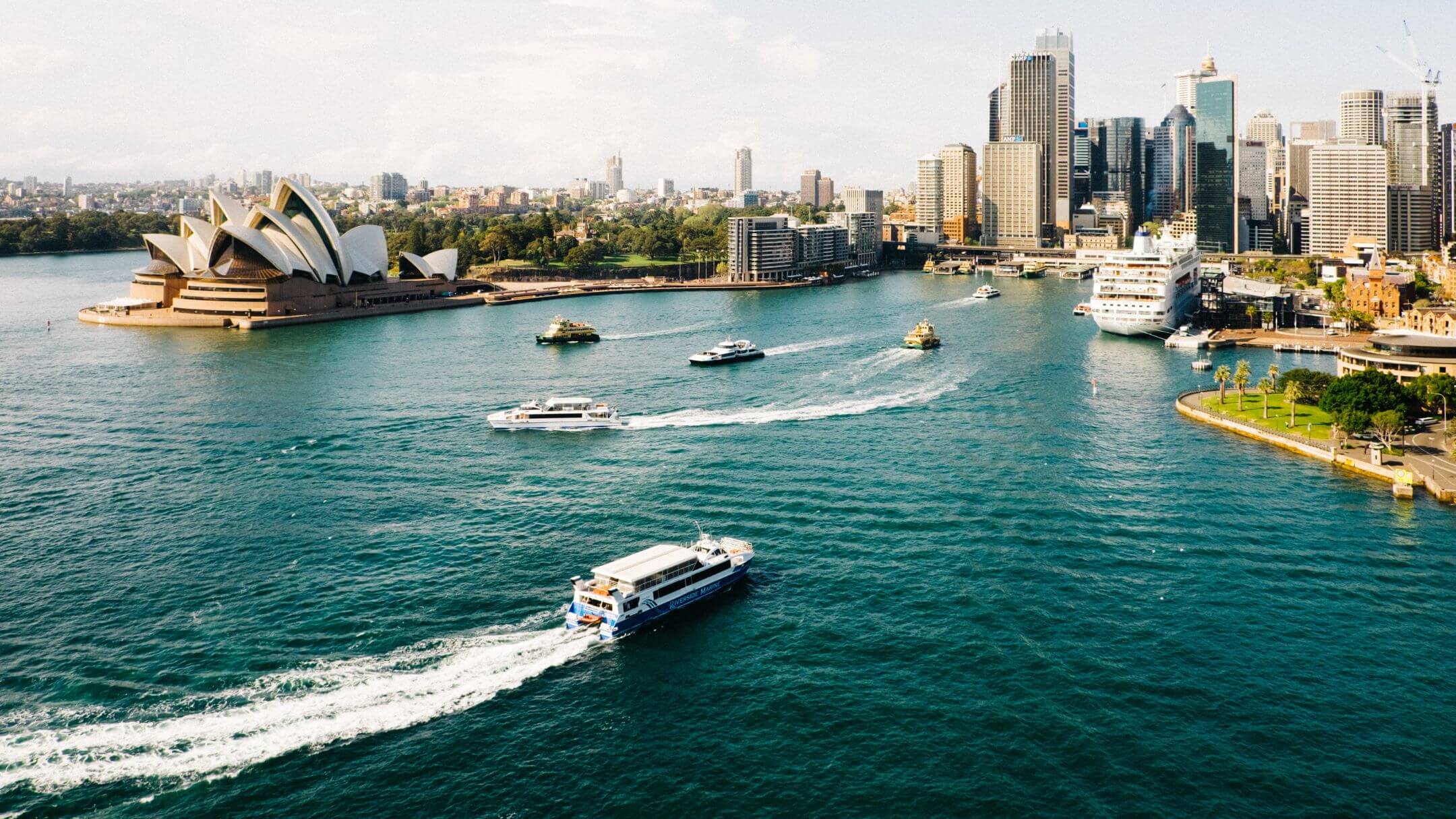The idea of building a Harbour Sydney Bridge its origins back to the early days of the penal settlement. By the early twentieth century, international advances in bridge engineering had made it possible to build a bridge of this scale. The Sydney Harbour Bridge used reinforced concrete and prefabricated steel to build the structure. Steel was chosen as it was a cost-effective material that would be malleable and durable.
Construction Began in 1924 for Harbour Sydney Bridge
In 1924, the NSW Government began seriously considering the construction of a bridge across Sydney Harbour. The government lobbied to get a private company to construct the bridge and set up an advisory board. It was then decided that a world-wide competition would be held for the design. This competition was won by Sydney-based engineer Norman Selfe. However, the project soon stalled due to government changes.
The bridge’s design was based on the Tyne Bridge in Newcastle. Most of the steel used in the bridge’s construction was smelted in England and shipped to Australia as pre-formed sections. However, some steel was also sourced from Newcastle in NSW.
Today, the Sydney Harbour Bridge is one of the most famous landmarks in Australia. Thousands of people cross the bridge on a daily basis. The bridge is a national icon and has great symbolic significance for Australia. The construction of the bridge took eight years and involved enormous amounts of work.
It Took 8 Years and 1400 Men to Build
The Sydney Harbour Bridge was built by a team of engineers and construction workers. The design for the bridge was first conceived in 1815 and it took eight years and more than 1400 men to complete the project. The bridge was one of the largest projects ever undertaken in Australia. There were many dangers involved in the construction, and 16 people were killed in the process. However, one person managed to survive the ordeal.
In 1926, the concrete piers were built to support the bridge’s arches. By the end of the year, the arches had already touched one another. The construction of the Sydney Harbour Bridge was one of the largest employment schemes in Australia during the Great Depression.
The construction of the bridge began at the same time as the construction of the underground railways underneath the city. The bridge was designed to carry six lanes of road traffic and two railway tracks on each side. In addition, the bridge was linked to a railway station in Wynyard.
The Sydney Harbour Bridge is grey in colour. Around 272,000 litres of paint were applied to the bridge during its construction. At one time, grey was the only colour available. The men who worked to paint the bridge worked 365 days a year. They used special fast-drying paint that dries in mid-air before reaching vehicles on the bridge.
It’s the Longest Single-Arch Bridge in The World
In the early 1930s, the Sydney Harbour Bridge was the world’s longest single-arch bridge. It is a steel arch with a steel deck suspended below and five steel truss approach spans. The steel arch is supported by hinges that expand and contract. The bridge is able to withstand wind speeds up to 200 km/h. It also has a design that can withstand braking from trains.
The Sydney Harbour Bridge is also home to some of the world’s most breathtaking views and an educational tour. There are 100 people employed each year to apply paint to the famous landmark. It takes nearly three months for the paint job to dry on the massive structure. This is why Paul Hogan, a rigger on the bridge, is responsible for securing access for teams of painters to complete the task.
The bridge was constructed in the early 1920s after a tendering process was conducted by the New South Wales government. The British firm Dorman Long and Company won the contract and began building the bridge in 1924. It took eight years and employed 1,400 workers. The completed bridge opened to the public in 1932.
The Sydney Harbour Bridge is Australia’s most famous landmark. It spans the Sydney Harbour and serves as the main transportation link between Sydney and its suburbs. It has four rail lines and two pedestrian walkways.
It was Inspired by New York’s Hell Gate Bridge
The Hell Gate Bridge is an iconic symbol of New York City, and the Harbour Sydney Bridge is a direct replica of it. The bridge was once known as the New York Connecting Railroad Bridge. It is a 1,017 – foot (310 m) steel through arch railroad bridge, it was known as the East River Arch Bridge.
In 1916, the Hell Gate Bridge connected Queens, Randall and Ward’s Islands, and the Bronx. It is one of the world’s longest steel-arch bridges. The Sydney Harbour Bridge was designed by architects who visited the New York bridge and copied its design. The Hell Gate Bridge is still in use today and is owned by Amtrak and other rail companies.
The Hell Gate Bridge was not given due credit when it was originally constructed. During World War II, Nazi demolition experts targeted it as a target for destruction. It was the subject of a 1991 movie, Queens Logic, and featured in the 1973 film Serpico. A miniature version of the bridge was even created by Lionel, the popular toy train company. However, the model was significantly scaled down from the prototype size.
The Sydney Harbour Bridge is similar to the New York City Hell Gate Bridge, with the same imposing decorative pylons and elegant arched shape. However, it is not as dangerous as the Hell Gate, though.
It’s an Icon of Sydney
One of the most iconic structures in the world, the Sydney Harbour Bridge spans 503 metres and stands 134 metres above the water. It was completed in 1932, and has since become an icon of Sydney. Its construction took nearly seven years and cost over six million pounds, or approximately $1 billion in today’s currency. It’s a massive structure that features many feats of engineering.
The bridge was originally built as part of a public transportation system, which included trams and trains. However, the advent of the motorcar made road transport the most common method of transport across the harbour. The bridge was later built with six lanes, with the trams removed in 1958. Today, the two tram tracks are the leftmost southbound road lanes and separated from the other six lanes by a median strip. Lanes 7 and 8 connect to the elevated Cahill Expressway, which carries traffic to the Eastern Distributor.
There were a number of different designs considered by the authorities for the bridge. One of these designs was based on the New York City Bridge. Another design involved using precast concrete blocks and a cantilever bridge. The design by Norman Selfe, an architect and engineer, received praise for its graceful design and structural lines. The design was approved by the New South Wales authorities, but the project was later cancelled due to the economic downturn and a change of government. Nevertheless, the iconic structure continues to be an icon of Sydney.
Building the Sydney Harbour Bridge was a long and difficult project. During construction, there were numerous accidents and fatalities. In fact, the bridge’s construction took over eight years. It employed more than 2,000 people, including engineers, ironworkers, and stonemasons. Some of these workers were from overseas, and many were highly skilled.
It’s Free to Climb
There are two ways to climb the Sydney Harbour Bridge: the express and the regular route. Both routes include guided tours to learn about the bridge’s history. The express route will take you up 1002 steps, while the regular route takes you up 1332 steps. Both routes offer great views of Sydney Harbour, and climbers are guaranteed to see some of the most beautiful views in the world.
The Sydney Bridge Climb is a great activity for both young and old. It’s the most popular bridge in the world, with over four million people climbing it each year. The climb is not difficult, and takes about 3.5 hours. It’s recommended for people eight years and older who enjoy an adventure. Afterward, they’ll receive a certificate of achievement and a free pass to the Pylon Lookout.
The Summit climb is the most popular option, but there is also a ‘Sampler Climb’ option that will take you only half way up the bridge. The sampler climb is a great option for people who aren’t as physically fit or for people who want a shorter experience. The sampler climb is free and takes about 1.5 hours.
If you prefer not to take the stairs, you can go for a jog. There’s also a pedestrian path. You can also choose to walk along the side of the bridge, which is where you’ll find the Pylon Lookout. The view of Sydney is fantastic, whether you do it during the day or at night.
Conclusion
There are many attractions in Sydney Harbour, such as the Sydney Opera House, Bondi Beach, Harbour Bridge, Sydney Tower, Sydney Harbour Bridge, Sydney Harbour, The Rocks, The Rocks New Town, Bondi Beach, Harbour Bridge, Sydney Harbour, Opera House, and many more. You can explore Sydney Harbour on your own or with a group of friends. When visiting Sydney Harbour, don’t forget to try one of the many restaurants, bars, or pubs overlooking Sydney Harbour. You can also visit the Sydney Aquarium and the Taronga Zoo, where you can see different kinds of animal in each of their habitats.








